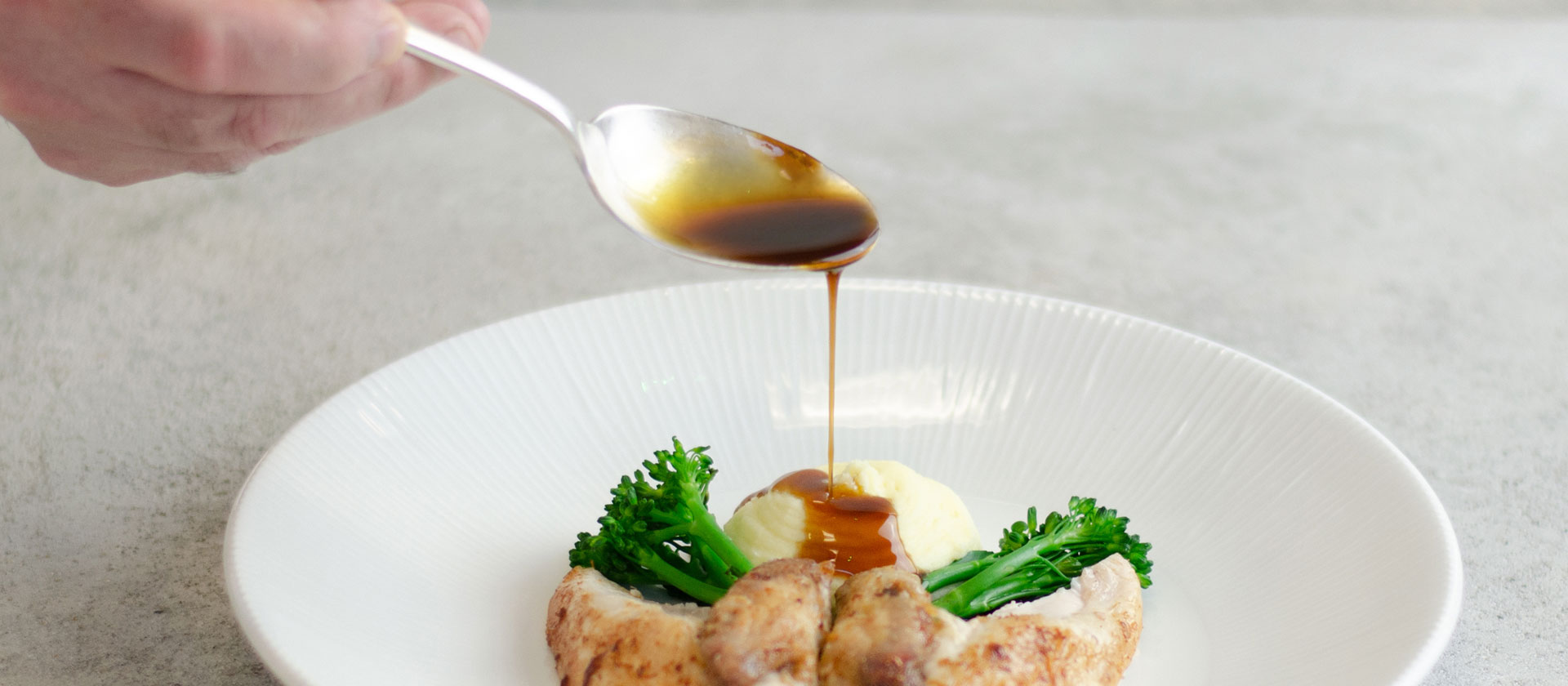
Season's Greeting from Le Cordon Bleu
André Cointreau, Le Cordon Bleu President, and Le Cordon Bleu team send their warmest wishes for the 2025 festive season.

It’s hard to picture the festive spread without the traditional sauces adorning the table, and to ensure they provide the perfect accompaniment it's important to give them some thought whilst planning your menu. Here we provide some guidance to Christmas sauces to help make your festive table complete.
Which sauce to choose?
Deciding on a sauce is easy once you’ve chosen what the main protein of your meal will be. We’ve provided the following sauce pairings to show what sauce works best with some of the most popular Christmas dishes.
Turkey – For this traditional poultry main, a gravy made from turkey bones is the best option as it will complement the delicate meat of the bird. Cranberry sauce is also an excellent accompaniment for turkey, and a delightful addition to your festive meal.
Beef Wellington - With this classic dish, a rich madeira or port wine sauce is the best choice as it will add to the earthy undertones of the red meat.
Salmon – For salmon use a white wine, dill and lemon sauce. The acidity will pair well with the richness of the fish.
Nut roast - This vegetarian dish favours a strong tomato salsa or mushroom sauce to enhance the flavour of the nuts and vegetables used in the nut-roast.
On the table – Providing a few different sauces is a good way to account for different tastes. Cranberry sauce, apple sauce, bread sauce and mint sauce can all be made quite easily in advance.
Making the perfect Christmas gravy
There are many different factors that will affect the taste and texture of your gravy. The initial flavour comes from the melted fat and roasted meat that is used in the sauce, which is combined with flour to thicken it. To avoid any lumps whilst thickening, use a whisk to stir the gravy constantly as it cooks.
Use a quality stock to add volume to your gravy but be careful not to dilute the flavours. Using a good homemade stock will make for a flavoursome gravy.
If you are using wine in your gravy, choose a decent quality red wine which will help add richness to the sauce. Consider adding a few dashes of port if you have some.
If using bones in your gravy, browning them by roasting them in the oven will add more flavour than boiling alone.
Making a sauce is not an exact science but there is definitely an art to it and a certain skill set that is needed to achieve perfection, therefore it is important to note that the experience of the person making the sauce is also something to consider. You will need to understand the physical changes that happen during the cooking process.
Chef's Tips
Here are our Le Cordon Bleu master chef's top tips that will help you on your journey to Christmas sauce perfection.
Reduction - Make use of the reduction method when making your Christmas sauce. This refers to the evaporation of liquid during the cooking process which then concentrates the flavours.
Lumps - If you accidentally make a lumpy sauce or gravy you can strain it through a fine sieve or cloth in order to rid it of the unpleasant clumps of flour.
Thickening - The simplest way to thicken your sauce is to make a simple roux (cooked melted fat and flour) or a beurre manié (raw flour and butter paste).
Practice, practice, practice - Making sauce is an art that cannot simply be learned from a recipe, so you have to keep repeating the method to perfect it.
Give it some kick - If you want to add a festive twist to a classic sauce, finish it with mustard or freshly grated horseradish to add some warming notes and give your Christmas lunch a lift!
Copyright © 2026 Le Cordon Bleu International B.V. All Rights Reserved.